Delphinium: characteristics, varieties, nuances of cultivation
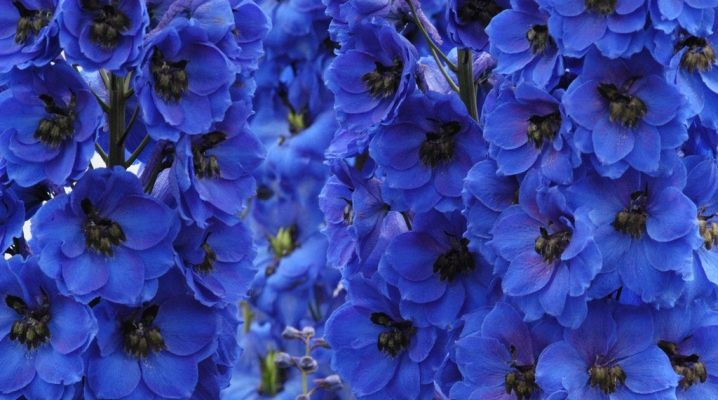
Russian gardeners and florists have mastered the cultivation of a wide variety of flowers. One of the most interesting specimens is the delphinium, which will be discussed in this article.

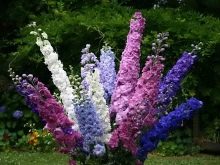
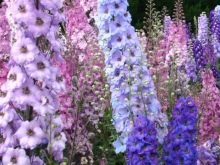
Description
All descriptions mention that this plant looks like candles formed by a series of buds. Depending on the region of residence, there are different names, including "spur" and "larkspur". The popularity of culture is due to the fact that it endures even very cold times. The name "delphinium" is associated with the peculiarities of the ear - it looks like the head of a sea dolphin. And the word "spur" appeared because of the characteristic eyes inside the sepals.
Regardless of what this plant is called, everyone agrees that it is great for chilly winters. Moreover, even if the cool summer has come, the plant is guaranteed to reveal itself in all its beauty. This circumstance also makes the delphinium popular among gardeners of the middle climatic zone of Russia.
In these regions, there are at least 90 varieties of delphinium. The time of his life is determined, first of all, by the actual weather. Depending on it, the same plants can live for 4 or 8 years. Simple buds of these flowers usually have 5 petals.
The spur occupies the middle. This combination makes the delphinium an excellent honey plant. The culture can be pollinated by bumblebees or small birds. The color of the flowers is varied. However, most species are decorated with blue or purple buds. The whiter the plant, the stronger the smell is usually.
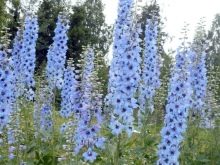
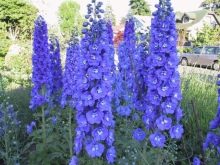
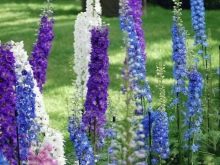
Flowers are grouped in standing panicles. Their size is 3-10 cm. The foliage resembles a flower, since it is cut into lobes to the very base. All parts are sharply sharpened. An ornamental bush, characterized by fluffiness, can stretch up to 2 m in height.
Delphinium blooms again. In some cases, the third flowering occurs during the season, the bushes can be used for cutting. Mostly hybrid grass is grown in the gardens, but in natural conditions, spur can be found in Southeast Asia (primarily in China), as well as in North America. For your information: there are some species originating from the African highlands.
It should be borne in mind that delphinium is poisonous, and toxic substances are contained in all its parts. During any work, precautions must be taken. When the work with the plant is finished, you need to wash your hands. According to the botanical classification, delphiniums belong to the Buttercup family. Dwarf varieties grow up to 0.5 m. Tall varieties reach 2 m. The delphinium is characterized by a strong development of the root system.
Shrubs have very branched rhizomes. Gradually, the middle part of these rhizomes dies, and the shoots on the sides turn into independent plants. Flowering lasts about 30 days, and its onset depends on latitude and weather conditions.
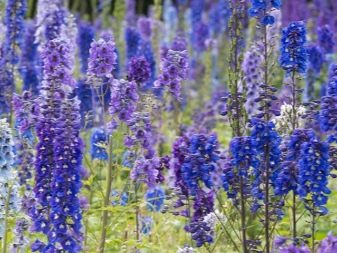
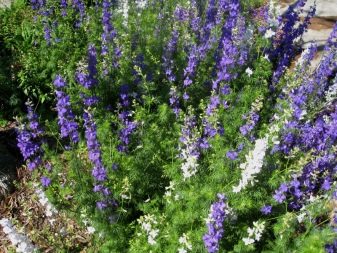
Types and varieties
Delphinium varieties are divided into two groups: annuals and perennial crops. The field variety is very popular. Its flowers sometimes rise up to 2 m in height. Inflorescences are formed from flowers of a double or simple type. There are bluish, white, pinkish and lilac colors.
Field delphiniums have been grown since 1572, so these plants cannot bring any surprises to flower growers. The field cultivar Frosted Sky produces bluish flowers with a white center. QIS Rose forms light pink flowers. The flowering period begins in summer and ends in early autumn.
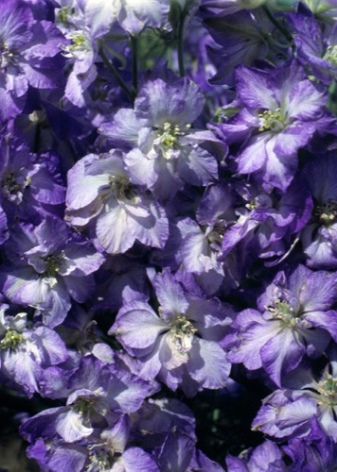
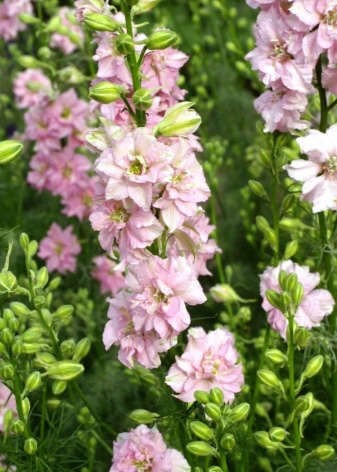
The hybridization of the eastern and dubious varieties of the delphinium resulted in "Ajax". This culture inherited the best properties from its ancestors. Shoots can grow up to 0.4-1 m. The dissected leaf plates almost completely correspond to the sedentary type. The spike-like inflorescences are painted in a variety of colors.
Various varieties have been created within the Ajax group, including those with double flowers. The flowering period lasts from July until the first frost on the soil. As for perennial delphiniums, they entered culture in the 19th century. The earliest varieties were Barlow and Belladonna.
Further successes of breeders led to the appearance of perennial multi-colored plants with a flower diameter of 2 to 9 cm.
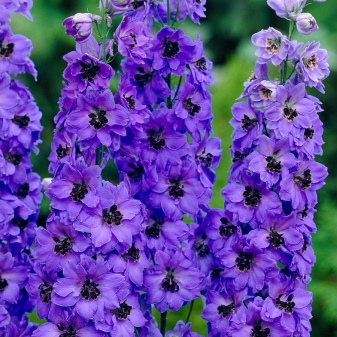
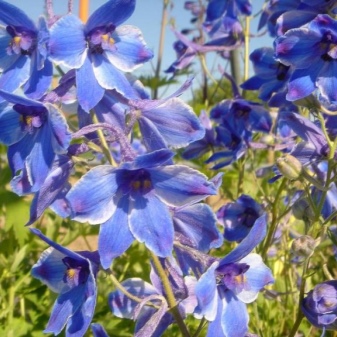
New Zealand delphiniums, as well as Marfinsky and Scottish hybrids, are very much in demand by gardeners. The varieties bred in the "Marfino" farm:
- give rather large semi-double flowers;
- tolerate severe frosts well;
- look graceful.

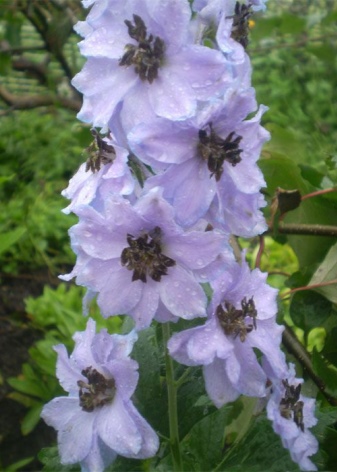
But the Marfinsky delphinium, regardless of the variety, cannot be planted with seeds. Rather, it is possible to multiply it this way, but without preserving the main valuable features. Noteworthy:
- "Pink Sunset";
- "Morpheus";
- "Spring Snow";
- "Blue Lace".
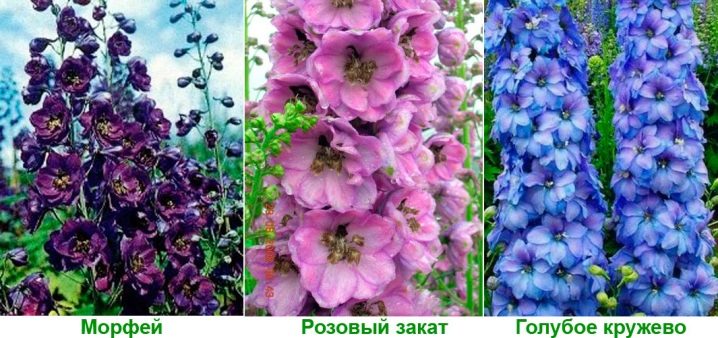
The New Zealand cultivar group appeared later than everyone else. It unites plants that can grow up to 2.2 m. The diameter of the flowers is 7-9 cm. New Zealand delphiniums can be of both double and semi-double type. There are also some plants with a corrugated petal perimeter.
New Zealand hybrids tolerate even severe cold well, and get sick a little. You can cut them off without problems.
Grades deserve attention Green Twist, Sunny Skies, Blue Lace.
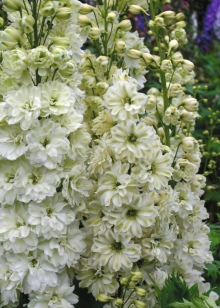
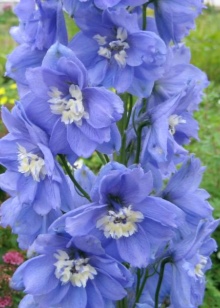
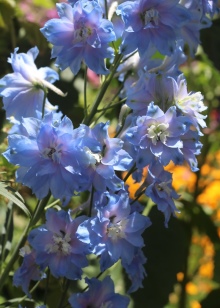
As for the Scottish delphiniums, these include Blueberry Pie, Morning Sunrise, Sweet Sensation. The Scottish varietal group gives double or super-double flowers, it develops dense inflorescences.
In some cases, flowers may contain more than fifty petals. The height of the bush ranges from 1.1 to 1.5 m. The inflorescences reach 0.8 m in length. The color of the flowers can vary greatly.
The Scottish delphinium attracts the attention of gardeners because it takes a long time to develop and can retain its characteristic traits with seed breeding.
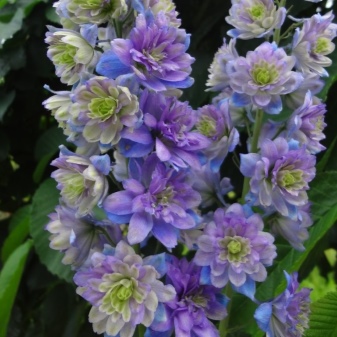

The annual delphinium looks attractive and forms tall, relatively slender stems. Many flowers are formed on them. Flowers can be characterized by violet, blue, pink coloration. Different annual varieties grow up to 0.4-2 m. An attractive feature of this group of plants is the atypical geometry and non-standard colors.
Important: an annual delphinium does not have petals, they are replaced by sepals. The spur is 0.5-4 cm long. The nectaries located inside it are guaranteed to attract insects. But the matter is not limited to nectaries; in addition, a pair of modest-sized petals is formed. A special eye is formed from them (the so-called staminode).

Among the 40 varieties of annual delphiniums, there are plants with gray, white and black flowers. The difference also applies to inflorescences: varieties are distinguished by their volume, density, and the synchronicity of blooming. Annuals are much better than perennial crops, suitable for novice florists. It is easier and easier to care for them.
When growing an annual from seeds, you can achieve an earlier flowering than when using perennials.
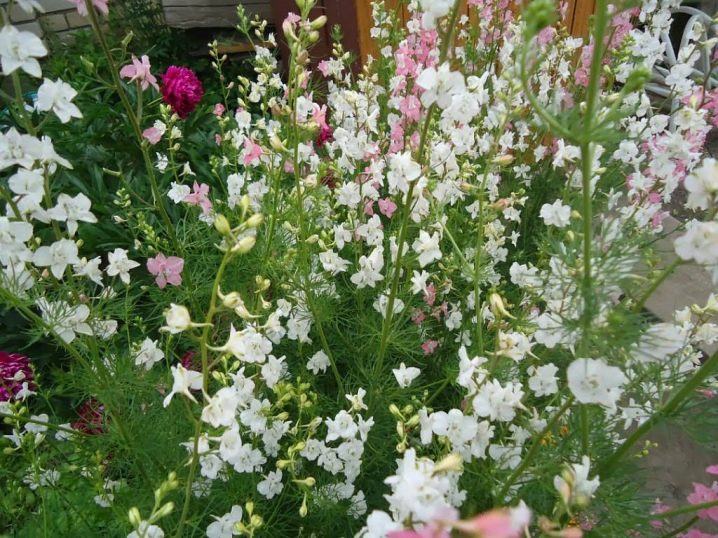
An attractive variety of the cultural delphinium is the Magic Fountain. It is often grown by amateur gardeners. Beautiful flowers of this varietal group are perfect for the formation of bouquets. The shoots are very powerful, with peduncles up to 2 m.The peduncle itself is formed from small bluish flowers of the double type.
If the Magic Fountain is watered only on dry days, it will bloom in June and July. Low-growing representatives of the group do not exceed 0.6 m. Such delphiniums can even withstand a fairly strong cold. Important: they should only be planted on dry areas. But for decorative work and the design of borders "Magic Fountain" will suit very well.
Also, gardeners are attracted by the fact that bouquets from this flower do not fade for a long time.
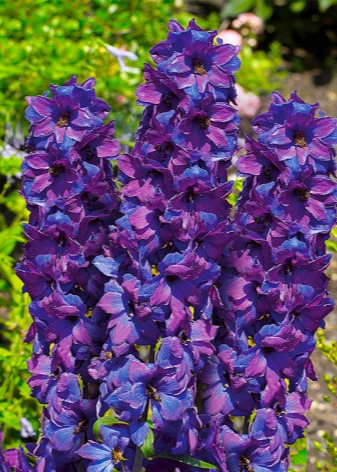
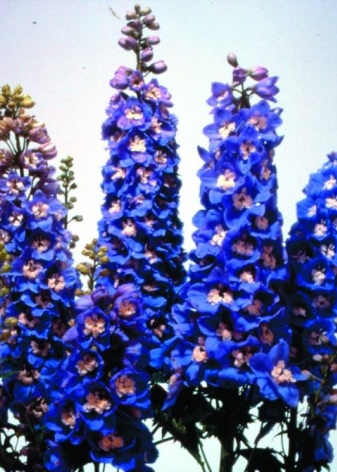
Blue Lace is another great variety. Its inflorescences are raised above the ground to a height of 2 m. They invariably delight with an abundance of purple and blue tones. Sowing in greenhouses or warm greenhouses is carried out in March and April.
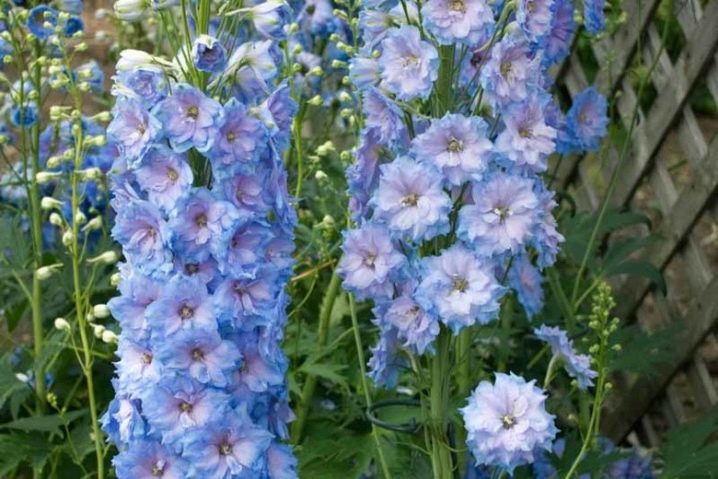
The "Casablanca" variety is a perennial delphinium that grows up to 1.2 m. It is distinguished by its expressive slenderness and attractive white flowers. They are of the semi-double or terry type. The diameter can reach 5 cm. Flowers are grouped in loose panicles. The roots of "Casablanca" are very persistent, and they tolerate winter well in the open field.
Delphinium of this variety is in demand for planting along a wall or fence, as well as for the formation of single, group plantings. It is also often used to make bouquets. In a vase of water, the inflorescences retain their attractive appearance for up to 10 days. In the second year of development, "Casablanca" blooms in June and July.
Occasionally, under favorable conditions, it blooms again in August. The height of the plants can reach 1.1 m. The diameter of the flowers is 5 cm.
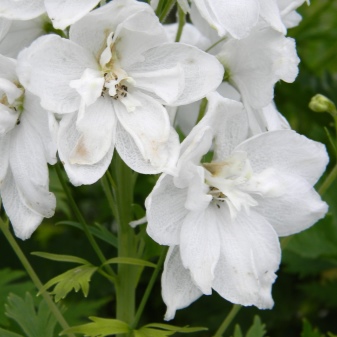
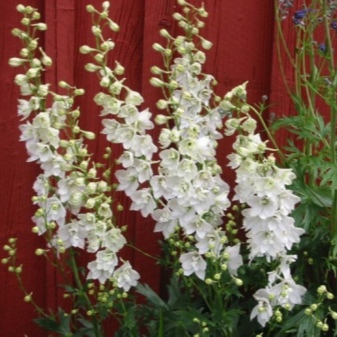
Blueberry Pie is a variety that can grow up to 1.1 m in height. Blueberry Pie is one of the Scottish hybrids. Its flowers are painted in a deep purple tone, and the outer petals are a simple blue. They have an attractive looking pistachio center. Peduncles are quite strong and stable. Blueberry Pie produces flowers of a dense double type, 5-6 cm in size. The flowering period begins in mid-June.
In order for the re-flowering in August to take place, you will have to get rid of obsolete shoots.
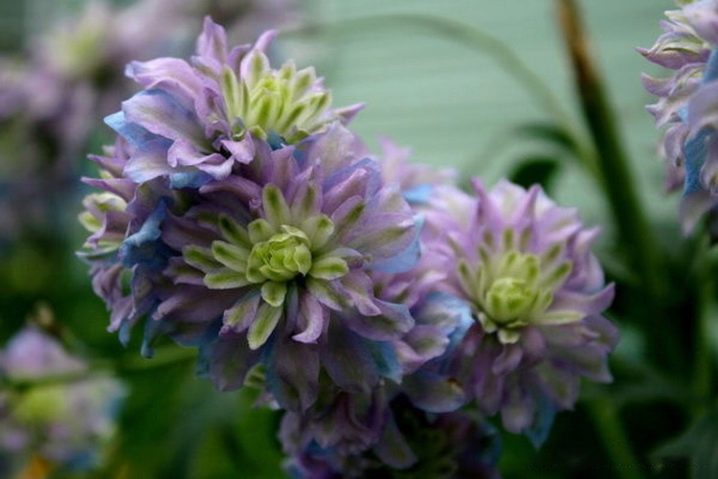
The Portofino variety also deserves high marks. This plant, not too demanding on the characteristics of the soil, is colored pink in various tones. There is no such coloring in perennial varieties of delphinium, which makes it possible to significantly diversify the plantings. Important: when dried, Portofino inflorescences retain their attractive appearance. This circumstance will be to the taste of connoisseurs of a winter bouquet. Basically, the variety is used as a tapeworm on grassy lawns. But you can combine it with other white and blue delphiniums.
Pacific Giant Galahad is a well-established plant. This delphinium reaches a height of 2 m. Elongated peduncles are formed on it, covered with large snow-white flowers from mid-June to the first autumn days.
Developers of the variety were able to achieve excellent resistance to cold (up to -40 degrees). But planting will have to be protected from stagnant water, which is dangerous even on relatively warm winter days.
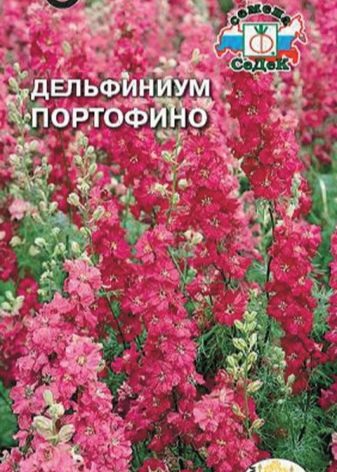
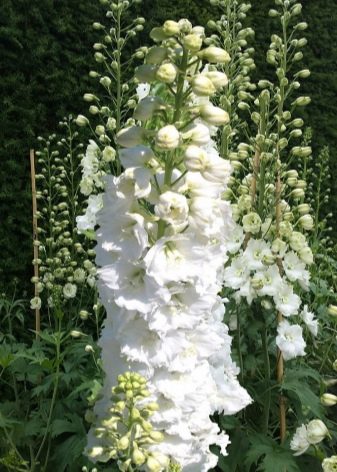
Another snow-white delphinium is the "Tsarsky" variety. The perennial type, resistant to winter, gives plants that rise up to 1.8 m. The diameter of the flowers does not exceed 6 cm. Flowering occurs in July and August. The size of the brushes is up to 0.5 m, they are decorated with exceptionally large semi-double flowers. The color is not just snow-white, it also strikes with incredible brightness.
Judging by the reviews, "Tsarsky" delphinium is perfect for cutting. It will stand in the water for a long time and will give off a sweet aroma. Important: in the domestic climate, this plant is mainly grown as a biennial.
Seedlings begin to be planted in March and in the first days of April. Ground planting is carried out in May or in the first June ten-day period according to the 50x50 cm scheme. Delphiniums of the "Tsarskoe" variety react extremely badly to an excessive amount of water and to desiccation. Mineral dressing must be applied strictly according to the schedule.

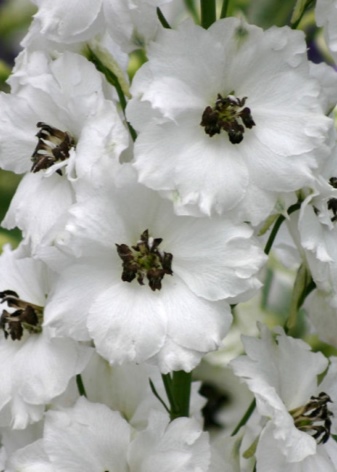
Grows equally well in sun and moderate shade Astolat has won the attention of gardeners with its atypical colors... It looks emphatically cold, the pink tone seems to be shaded with a light haze. And in it one can also guess the shine of mother-of-pearl. Astolat flowers are very large. A mass of minor petals gathers in the center.
Recommended for gardens with restrained pastel colors. But you can also dilute them with overly bright, catchy plantings. The height of the Astolat delphinium exceeds 1 m. It is necessary to wait for the appearance of flowers on powerful shoots by mid-July. The plant is decorated with delicate foliage. In the first days after transplanting into street soil, the culture needs to be shaded.
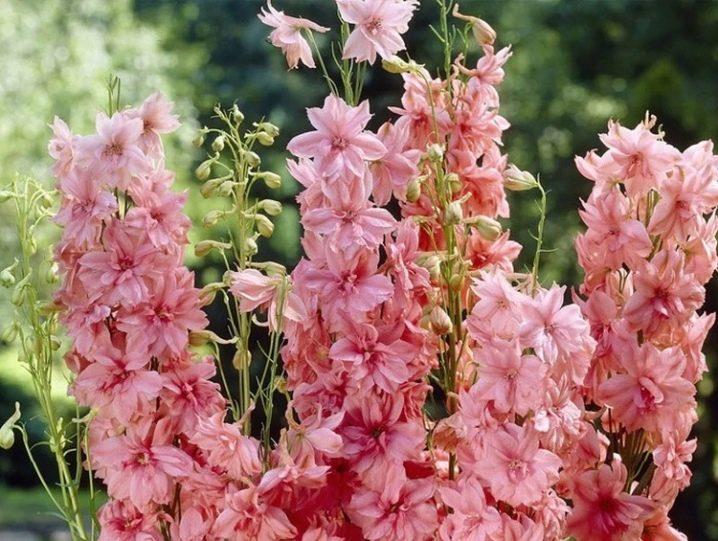
It is appropriate to end the review on the Darwin`s Pink Indulgence variety. This plant produces pleasant double flowers, divided into three layers. They are typically star-shaped and concentrated in the form of pink cones. The center of flowers is always lighter than their edge. The height reaches 0.9 m. The flowering period falls in June and July. In favorable conditions, it can be repeated in August and September. Cold resistance up to -35 degrees is guaranteed.
Important: in the middle lane, repeated flowering is undesirable, because of it, the delphinium may suffer. Winter shelter is required only in severe frosts in a snowless year.
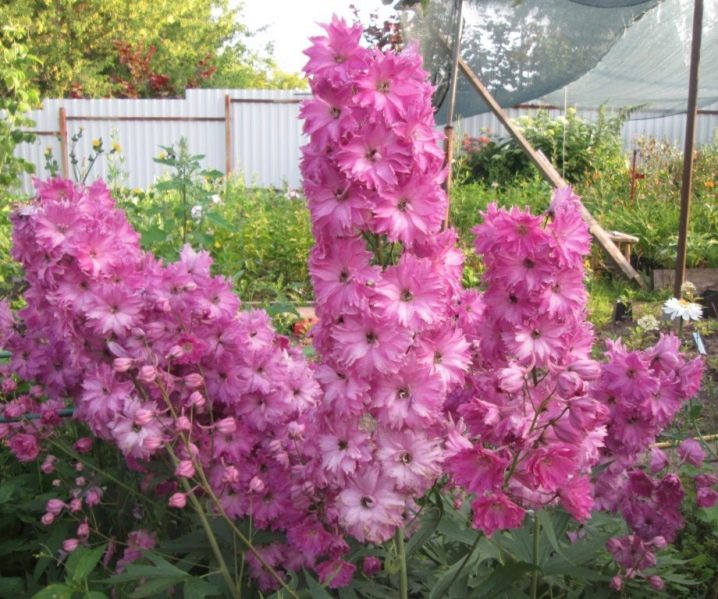
How to grow?
Consider the main subtleties of growing a delphinium.
Landing
You can plant a delphinium in a garden or on a separate flower bed in April, May, in the last days of August and in the first two weeks of September. In most cases, in our country, seedlings are used for this. Seeds should be planted about 60 days before the expected planting of seedlings in open ground. In the middle lane, the optimal time to start breeding seedlings is half of March. In the southern regions, this can be done earlier (from 14 to 28 February), but in Siberia, the Urals and the Far East, you will have to wait until April.
Some gardeners in warm areas immediately try to grow delphinium in the open field, bypassing the seedling stage. But it is still correct to play it safe in order to reliably protect yourself from frost and plant already hardened plants.
A rational choice of territory for planting a culture is also important. She appreciates good lighting in the morning and evening hours. In this case, it is advisable to provide shade in the hottest time.
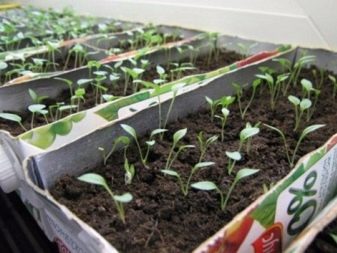
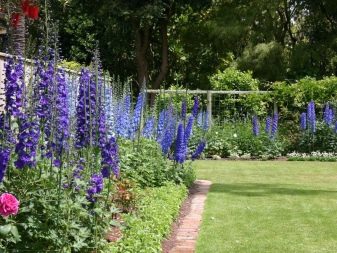
Direct UV rays can burn out very bright petals. Because of this, plants lose their attractiveness. Wind protection is also important. This is especially true for high varieties of delphinium, the hollow stems of which break even with slight pressure. As already mentioned, you will have to take care of good drainage and not flood the plantings.
For soil, slightly damp loam and sandy loam are best. They must contain a lot of organic matter. Neutral or weak acidity is preferred. Before landing on each square. m. you will need:
- 10-20 kg of river sand;
- from 50 to 80 kg of mineral complex compounds;
- 20 or 25 kg of compost (sometimes replaced with humus).

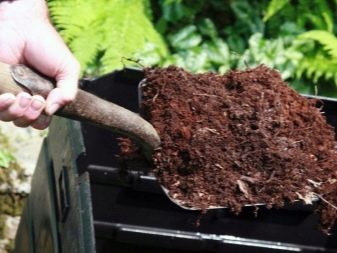
To improve too poor soil, 40-50 g of minerals and 10 to 15 kg of natural organic matter are placed per 1 square meter. Acidic earths will have to be limed. Alkaline areas are refined with granular sulfur. But the preparation does not end there, it is also necessary to provide for 0.2 m of drainage.
Larkspur is planted by seeds, dividing by roots or cuttings. The vegetative method is most effective in preserving varietal qualities. Important: you should not buy seeds from little-known suppliers. Seed material will have to be disinfected for 20 minutes in pale potassium permanganate or special preparations. After this treatment, the seeds must be washed under running water.
Then it will remain to soak them for 24 hours. A small amount of "Epin", "Zircon", aloe juice or honey is added to the water.After soaking the seeds, wrap them in a damp cloth and stratify them in the refrigerator. The procedure is carried out exactly until the seeds hatch. Next, the bundle is kept on a sunny windowsill for several days (in the dark, it is illuminated with a phytolamp).
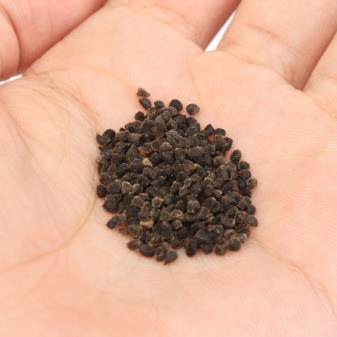
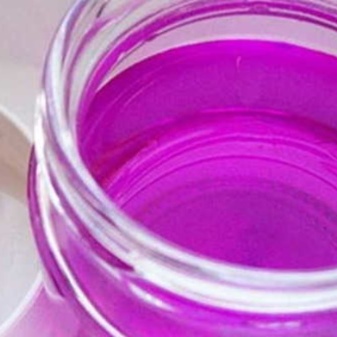
For growing in pots, use universal or intended for succulent soil. When self-preparing the soil mixture, it must be disinfected in the oven for 60 minutes. The soil laid in the container is tamped a little. And here it is not recommended to press down the seeds themselves, they are simply placed on top.
Additionally, the seeds are covered with a small layer of soil mixture (sometimes vermiculite replaces it). Covering with plastic lids or transparent cling film is practiced. You can expect seedlings about the tenth day. For a full guarantee, it is necessary to inspect crops from 6-7 days every day. The subsequent cultivation of seedlings occurs at a temperature of 18 to 20 degrees.
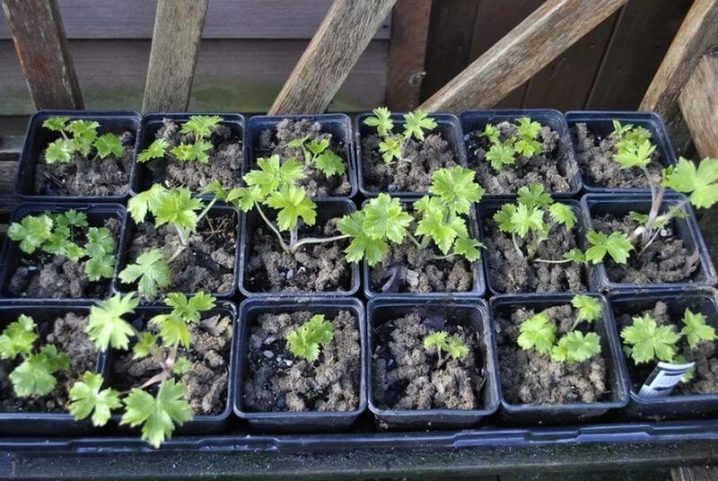
Basic care
During the growing season, 1 delphinium flower should receive 65 liters of water. But if there is little rain, 20-30 liters of water are poured under the bush every 7 days. Increase watering (reducing its volume) while folding the inflorescences. Surface watering and irrigation of the stem or leaves are categorically unacceptable. If late autumn is dry, increased watering will help the plant survive the winter.
It is necessary to prune the delphinium when the stems reach a height of 0.3 m. Thinning them, in the specimens that have begun to bloom, they retain a couple of stems, and in the older ones - 4 or 5. In tapeworms, all lateral shoots are cut off. But with a group mixed landing, they should be left.
Before the onset of winter, all peduncles above 0.3 m are removed.
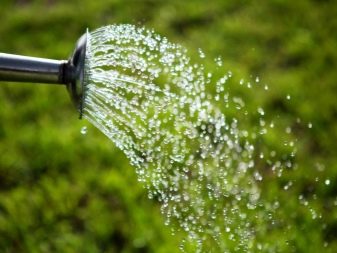
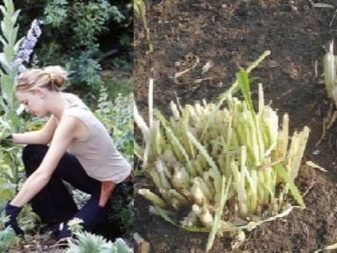
Wintering
As soon as flowering ends and foliage dries up, the stems should be cut 0.3 - 0.35 m above the soil. The voids inside the shoots should be coated with clay or covered with garden pitch, otherwise the penetration of moisture can provoke rotting. Expecting a winter with little snow, it is required to cover the bushes from below with a layer of straw or spruce branches. It is necessary to dig channels around all plants before the beginning of winter.
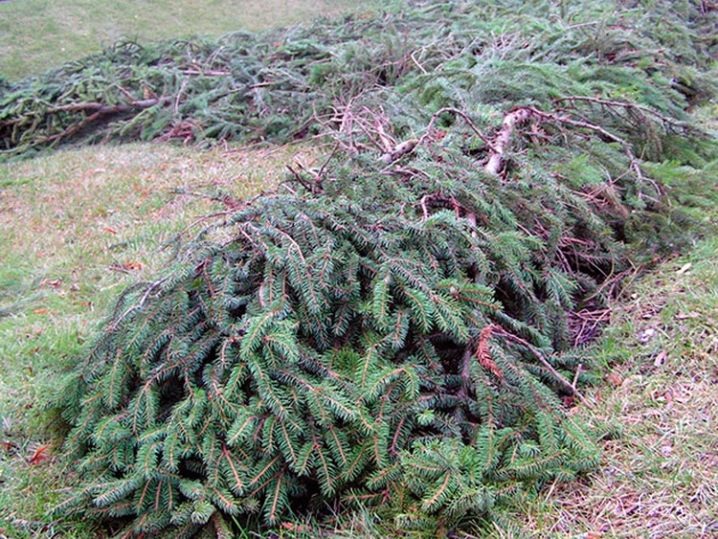
Fight disease
Black spot is treated with sprays tetracycline solution... Usually, a tablet of the drug is diluted in 1 liter of water. Powdery mildew can be eliminated by fungicides, the best among them have shown themselves Topaz and Fundazol... Get rid of ramulariasis standard antifungal agents.
When infected with ring spot, all that remains is to dig and burn the plant.
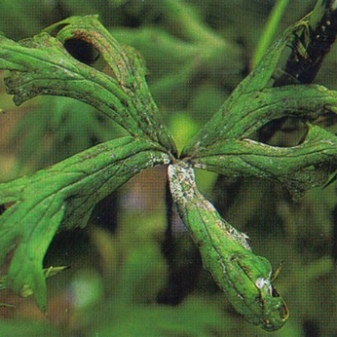
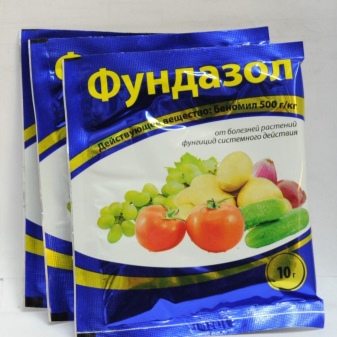
Reproduction
Usually the spur is propagated by dividing the root. To do this, take three-year or four-year copies. At any other age, the plant will tolerate the procedure worse. In autumn, it is carried out at the beginning of seed ripening. In the spring, you need to wait for fresh foliage to germinate.
The roots are carefully removed from the soil, saving a larger lump. Delenki must be done in such a way that a young shoot and a dormant bud are preserved on each. Care before the beginning of autumn must be thorough. Shelter will be needed before the onset of winter. Cuttings for propagation are taken only from above, they are harvested in the spring.
There should be some root tissue left on each cut. Rooting takes place in a sandy-peat substrate. A transparent cap is required. It will take 5 or 6 weeks to wait for the result. Transplantation to a place of stable cultivation is carried out in the spring.

Examples in garden design
Delphinium is usually used in mixborders. In this case, different varieties are taken, and each of them is planted in a large group. Since the larkspur has large shoots, it can serve as an excellent backdrop for undersized decorative species such as chamomile or phlox. But the same plant is also suitable for an ensemble with tall grains, lilies, jasmine or barberry. Another option is to plant small varieties of annuals in the center of the mixborder along with:
- phlox;
- iris;
- exotic poppies;
- lupine.
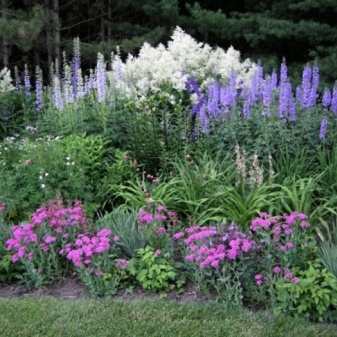
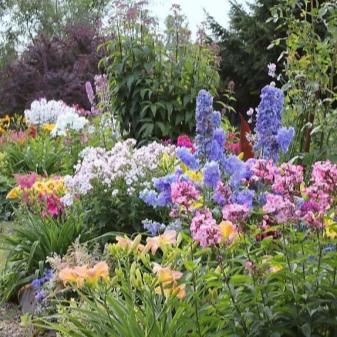
A medium-sized spur is used mainly as an accent in the middle of a flower bed or in a high bed. Very low plants are recommended to be planted in a curb or in a flower bed. They are also recommended for decorating containers, rockeries or rocky gardens. You can combine all existing varieties of delphinium with roses.
Gardeners can safely choose any of these options - it will still come out charming.
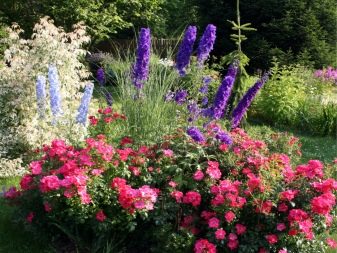
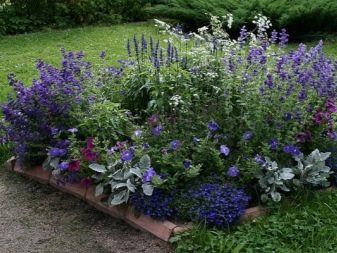
For information on how to grow a delphinium from seeds, see the next video.



































































































The comment was sent successfully.